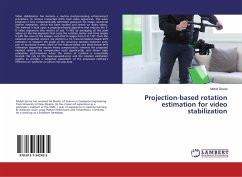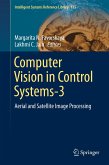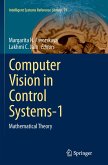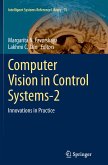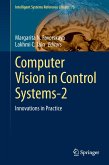Video stabilization has become a routine post-processing enhancement procedure, to remove unwanted shifts from video sequences. This work proposes a new computationally optimized approach for image rotational motion estimation, which has been studied and tested on shaky videos. The method is built upon a projection-based algorithm that reduces the 2-D video sequences into vectors of size 1×180, by averaging all the pixel values on the line-segments that cross the rotation center and form angles 0 with the rows of the images, such that 0 ranges from 0 to 179°. From the obtained projected vectors, we perform a 1D cross-correlation-based shift estimator, to measure the angle of the occurring rotation between each pair of successive frames. Most of the feature-based and block-based shift estimation algorithms require heavy computations, whereas the proposed method reduces the computation costs significantly, and shows high estimation performances when the center of rotation is successfully located. We rely on the mean-squared-error and the rotation estimation graphs, to provide a subjective assessment of the proposed method's efficiency on synthetic as well as real-case data.
Bitte wählen Sie Ihr Anliegen aus.
Rechnungen
Retourenschein anfordern
Bestellstatus
Storno

